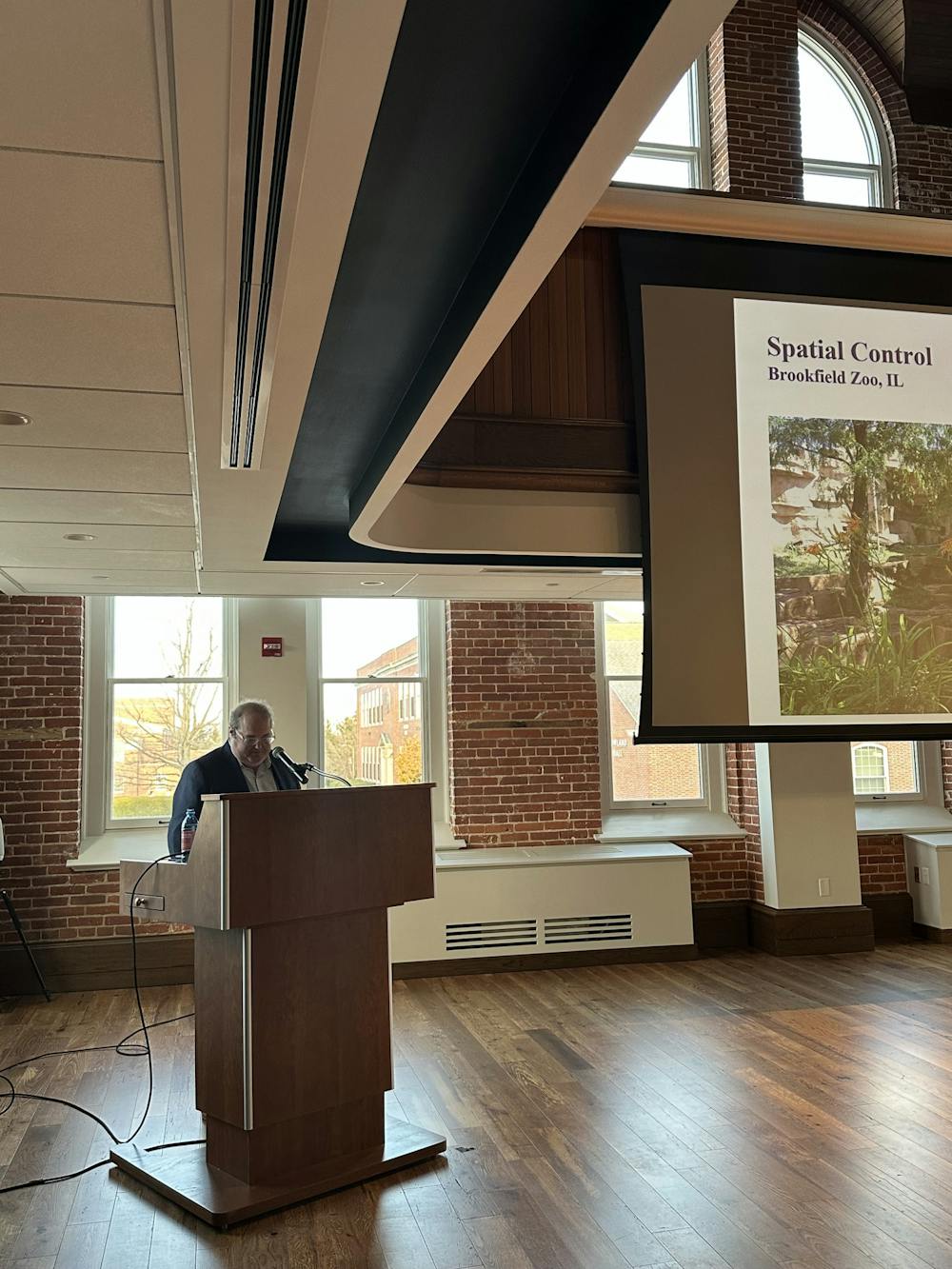Shippensburg University’s Sociology and Anthropology Department hosted an information session on zoo sociology with University of Pennsylvania Sociology Professor David Grazian. The event was held from 3:30 p.m. to 4:30 p.m. in Stewart Hall.
Grazian is a professor of sociology and communication and the faculty director of the urban studies program. Grazian primarily focuses on culture, mass media, arts, cities and urban sociology, but he has spent four years as a volunteer zookeeper and dedicated 600 hours of fieldwork researching on zoos and animal life in metropolitan areas.
Grazian discovered many attributes of the life of exotic animals placed in the captivity of zoos. He discovered that zoos share common similarities with his research on culture and learned that both are important where workers can perform expressive and utilitarian labor in order to make culture performances come to life.
Grazian said, “Zoos reflect how humans construct the natural world both literally and figuratively,” meaning when people visit zoo exhibits, it is staged to accurately represent the living conditions of the animals if they were still in the wild. Grazian became fascinated with new naturalism, which refers to zoo exhibits becoming more naturalistic. Zoos want their exhibits to represent nature.
Grazian discovered that some animals benefited while others suffered creating a series of dilemmas. When creating a fantasy world at a zoo exhibit, cable wires are commonly used to keep the animals from escaping, but they can create more harm than good. Grazian said, “unfortunately, electric cables can shock animals, but often, they don’t work. Thick skinned animals can withstand high voltages, and some animals can short circuit the cables.”
Grazian shared with Shippensburg students about a case that happened at the Woodland Zoo in Seattle, Washington, where an orangutan learned to entertain himself by electrocuting himself with a windowpane that sent shocks through his body.
Grazian touched on environmental and behavioral enrichments, which are things given to the animals that stimulate natural behaviors. There are some exhibits that provide the animals with resources that are beneficial, while others do not. “There are jaguars that play with square blocks, balls, and kegs ... one doesn’t expect to see beer kegs in a naturalistic zoo exhibit,” Grazian said.
To deal with these dilemmas, nature makers rely on strategies that involve censoring nature, spatial controlling and simulations. These are productive ways to improve the lifestyle of the animals and to the people visiting exhibits.
“The takeaway is that zoos rely on nature makers to negotiate among competing cultural and organizational demands in order to bring the naturalistic zoo exhibit to life,” Grazian said.
At the end of the presentation, attendees asked Grazian questions to further their understandings. One person asked, “Zoos have been pushed to think more about conservation, and they have displayed their positive ethological role more. Can you talk more about how it has changed over time?”
Grazian explained that zoos have realized that they are conservation centers and dedicate time to building space in zoos to promote and advertise their conservation efforts.



The Slate welcomes thoughtful discussion on all of our stories, but please keep comments civil and on-topic. Read our full guidelines here.